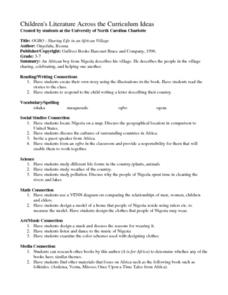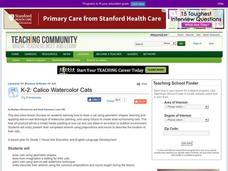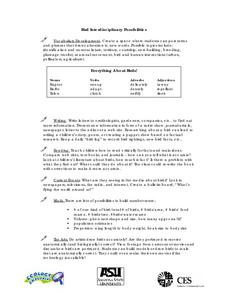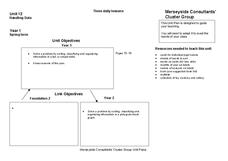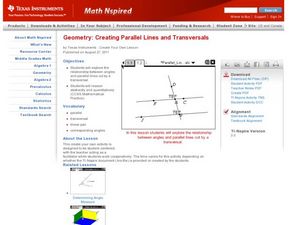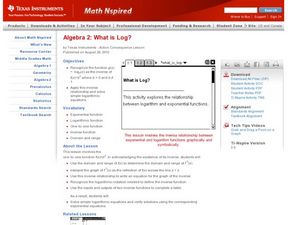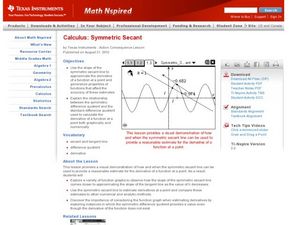Curated OER
Children's Literature Across the Curriculum Ideas-OGBO : Sharing Life in an African Village
Students read OGBO: Sharing Life in an African Village by Ifcoma Onyefulu. They complete a variety of cross-curricular activities surrounding the study of Nigerian culture. Included are reading, art, math, science, writing, social...
Curated OER
The Young Basketball Player
Students explore the history of basketball by reading and listening to a book entitled, "The Young Basketball Player." Afterwards, they create a trivia basketball game and write an interview for their favorite player. As a...
Curated OER
Calico Watercolor Cats
A fun art project, this lesson incorporates math and listening skills as young artists play with a new painting technique. First the teacher models how to draw a cat using shapes, an oval for the body, triangles for the ears and so on,...
Curated OER
Which Fish Where?
Here is a activity outline that prompts elementary students to graph and analyze data regarding fish caught along the Hudson River. They will review vocabulary and complete 2 worksheets which can be accessed by clicking on the provided...
Curated OER
Children's Literature Across the Curriculum Ideas-Hanukkah Lights, Hanukkah Nights
Learners read Hanukkah Lights, Hanukkah Nights by Leslie Himmelman. They complete a variety of cross-curricular activities surrounding the study of Hanukkah. Included are reading, art, math, science, writing, social studies, and library...
Curated OER
Children's Literature Across the Curriculum Ideas-How Dogs Really Work!
Students read How Dogs Really Work! by Alan Snow. They complete a variety of cross-curricular activities surrounding the study of dogs as pets. Included are reading, art, math, science, writing, social studies, and library connections.
Curated OER
Children's Literature Across the Curriculum Ideas-Miss Spider's New Car
Students read Miss Spider's New Car by David Kirk. They complete a variety of cross-curricular activities surrounding the study of spiders. Included are reading, art, math, science, writing, social studies, and library connections.
Curated OER
Bird Interdisciplinary Possibilities
Students explore birds, their territory, breeding, and seasonal movement. They research and collect information on birds through writing letters to ornithologists, reading in books, comparing web sites, and observing pictures. Students...
Curated OER
Some "ar" Words
In this vocabulary worksheet, students say and study 15 words containing the sound "ar." Students put them in alphabetical order, then draw pictures for them.
Curated OER
Using Circumference
Students participate in a activity that covers the concept of finding the circumference of a circle. The teacher covers relevant vocabulary with the students. They work in groups to measure objects and calculate the formula to find the...
Curated OER
Exploring Geometric Patterns and Relationships
Students explore the concept of geometric patterns. They use a review of patterns with numbers for a warm-up activity.Then the teacher does examples with the students attempting to find the pattern.
Curated OER
Locating the Salt Front
Young scholars use Hudson River salinity data to create a line
graph that shows the location of the salt front, and use math
skills to explore how this location varies over time. They use the graph to estimate the location of the salt...
Curated OER
Simple Inequalities on a Number Line
Students solve inequalities problems. In this algebra lesson, students graph the solution of inequalities on a number line. They discuss boundaries and open or closed intervals.
Curated OER
Measuring Angles
Sixth graders identify and measure right, acute, obtuse, and straight angles. In this geometry lesson, 6th graders review the definition of each angle and are shown examples of each specific angle. Students use toothpicks, gumdrops, and...
Curated OER
Handling Data
Students create a simple table in order to solve a problem. As a class, they create a simple data table in order to discover the number of letters in each student's name. This data is interpreted in order to answer questions and make...
Curated OER
Sequence Investigation
Eleventh graders investigate arithmetic sequences. In this Algebra II lesson, 11th graders create an arithmetic sequence and explore the effect of each variable in the formula of the nth term of an arithmetic sequence. ...
Curated OER
Classifying Polygons
Seventh graders participate in a polygon hunt. In this polygon lesson, 7th graders examine how polygons are alike and different. Students create a Venn diagram and label the sorting circles. Students work in cooperative...
Curated OER
Creating Parallel Lines and Transversals
Have your class create parallel lines. Students will learn how to identify the different angles created by a parallel line cut by a transversal. Then, they identify and name similar and different angles.
Curated OER
What is Log?
Young mathematicians differentiate between logs and natural logs in this algebra lesson. They solve functions and logarithmic functions. Learners also graph and rewrite the exponential and log functions.
Curated OER
Epsilon-Delta Window Challenge
Students graph functions and analyze them. In this calculus instructional activity, students define limit formally using Epsilon-Delta. They use the TI to graph the function and analyze it.
Texas Instruments
A Tale of Two Lines
Students graph systems of equation. In this calculus instructional activity, students graph their lines on a TI calculator. They identify the point of intersection and the type of solution.
Curated OER
Basic Limits
Learners calculate the limits of functions. In this calculus lesson plan, young scholars find the left and right handed limits of different functions. They use the Ti Navigator to drag the function around as they study limits.
Curated OER
Critical Points
Students identify critical points on a graph. In this calculus lesson, students graph their equations on the TI calculator. They zoom in and out to identify the critical points.
Curated OER
Symmetric Secant
Mathematicians use a symmetric secant line to prove the derivative at a point. In this trigonometry lesson, students create secant lines on the navigator to analyze the derivative. They move the lines around and make observations.
